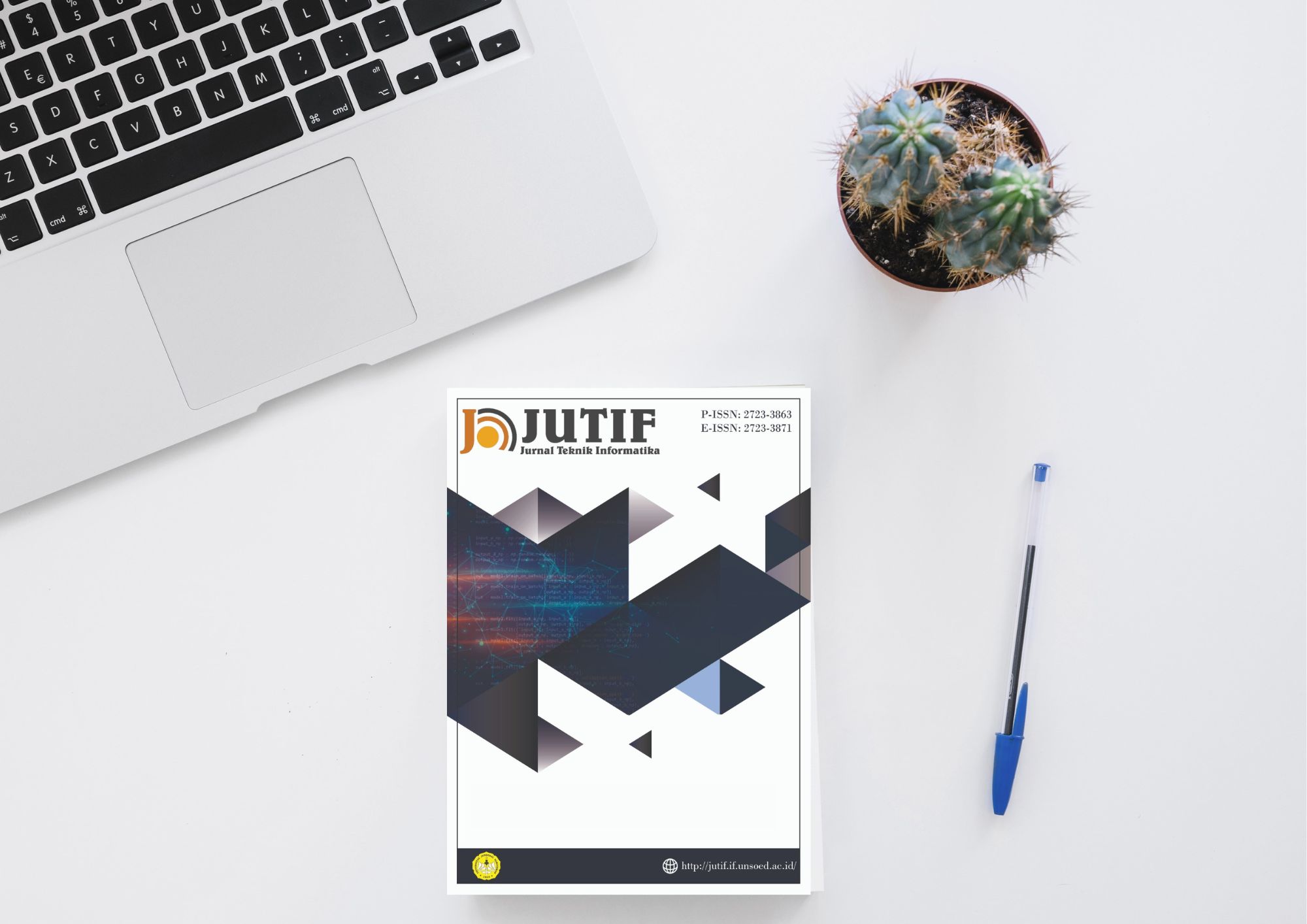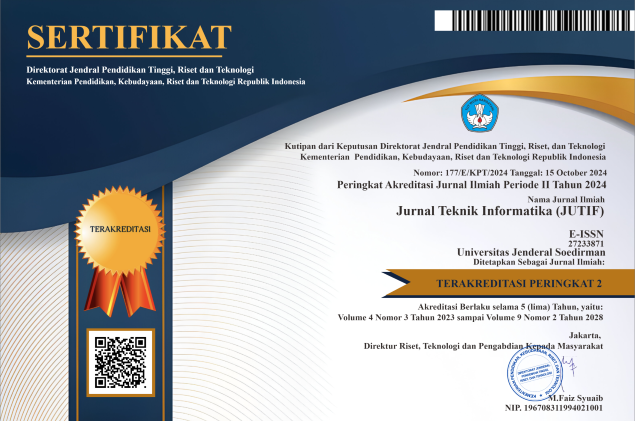About the Journal
Jurnal Teknik Informatika (JUTIF) is a journal, that publishes high-quality research papers in the broad field of Informatics, Information Systems, and Computer Science, which encompasses software engineering, computer systems, computer network, algorithms and computation, and social impact of information and telecommunication technology.
Jurnal Teknik Informatika (JUTIF) is published by Informatics Department, Universitas Jenderal Soedirman bimonthly, in February, April, June, August, October, and December. All submissions are double-blind and reviewed by peer reviewers. All papers can be submitted in BAHASA INDONESIA or ENGLISH. JUTIF has P-ISSN : 2723-3863 and E-ISSN : 2723-3871. JUTIF has been accredited SINTA 2 by Kementerian Pendidikan, Kebudayaan, Riset, dan Teknologi. Accreditation results and Cerficate can be downloaded here.
| No | Year | Acceptance Rate |
|---|---|---|
| 1 | 2021 | 25.0% |
| 2 | 2022 | 50.81% |
| 3 | 2023 | 23.15% |
| 4 | 2024 | 25.20% |
Jurnal Teknik Informatika (JUTIF) has published papers from authors with different country. Diversity of author's in JUTIF. :
- Vol 2 No 2 (2021) : Hungary
 , Saudi Arabia
, Saudi Arabia  , Indonesia
, Indonesia  .
. - Vol 4 No 3 (2023) : Germany
 , Australia
, Australia  , Japan
, Japan  , Malaysia
, Malaysia  , Indonesia
, Indonesia  .
. - Vol 4 No 4 (2023) : Nigeria
 , Saudi Arabia
, Saudi Arabia  , Malaysia
, Malaysia  , Indonesia
, Indonesia  .
. - Vol 4 No 5 (2023) : Japan
 , Timor Leste
, Timor Leste  , Malaysia
, Malaysia  , Indonesia
, Indonesia  .
. - Vol 4 No 6 (2023) : Nigeria
 , Turkiye
, Turkiye  , Philippines
, Philippines  , Malaysia
, Malaysia  , Indonesia
, Indonesia  .
. - Vol 5 No 1 (2024) : Egypt
 , Turkiye
, Turkiye  , Saudi Arabia
, Saudi Arabia  , Malaysia
, Malaysia  , Indonesia
, Indonesia  .
. - Vol 5 No 2 (2024) : Japan
 , Brunei Darussalam, Malaysia
, Brunei Darussalam, Malaysia  , Indonesia
, Indonesia  .
. - Vol 5 No 3 (2024) : United Kingdom, Italy, Malaysia
 , Indonesia
, Indonesia  .
. - Vol 5 No 4 (2024) : Palestine, Iraq, Malaysia
 , Indonesia
, Indonesia  .
. - Vol 5 No 5 (2024) : Ukraine, Poland, Iraq, Japan
 , Malaysia
, Malaysia  , Indonesia
, Indonesia  .
.
Jurnal Teknik Informatika (JUTIF) also open submission for "Selected Papers". Submission with "Selected Papers" will be published in the nearest edition. For available quota can be seen in https://bit.ly/UpdateJutif. Selected papers only for papers written in English and papers which have co-authors from other countries (Non-Indonesian authors). If your article is written in English and has a minimum of 1 co-author(s) from other countries (Non-Indonesian Authors), please contact our representative (+62-856-40661-444) to be included in the Selected Papers Quota.
For Frequently Asked Questions, can be seen via http://jutif.if.unsoed.ac.id/index.php/jurnal/faq

| Journal Information | ||
| Original Title | : | Jurnal Teknik Informatika (JUTIF) |
| Short Title | : | JUTIF |
| Abbreviation | : | J. Tek. Inform. (JUTIF) |
| Frequency | : | Bimonthly (February, April, June, August, October, and December) |
| Publisher | : | Informatics, Universitas Jenderal Soedirman |
| DOI | : | 10.52436/1.jutif.year.vol.no.IDPaper |
| P-ISSN | : | 2723-3863 |
| e-ISSN | : | 2723-3871 |
| Indexing | : | Sinta 2, Dimension, Google Scholar, Garuda, Crossref, Worldcat, Base, OneSearch, Scilit, ISJD, DRJI, Moraref, Neliti, and others |
| Discipline | : | Information Technology, Informatics, Computer Science, Information Systems, Artificial Intelligent, and others |



























